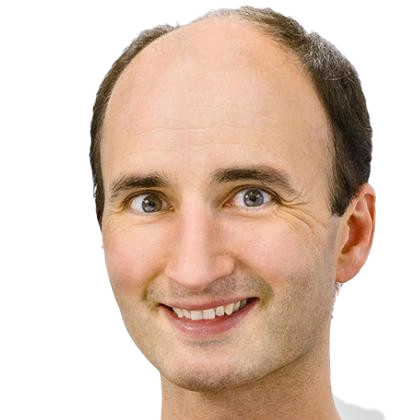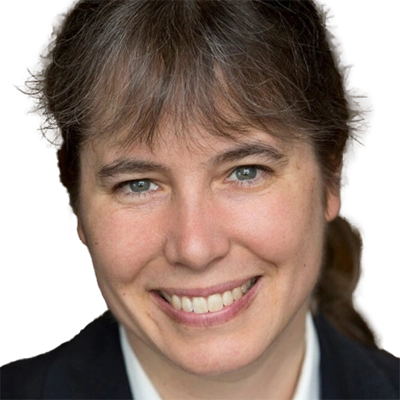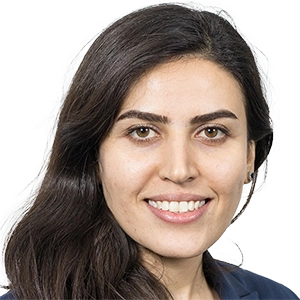22.11.2022

MCML Researchers With 15 Papers at NeurIPS 2022
36th Conference on Neural Information Processing Systems (NeurIPS 2022). New Orleans, LA, USA, 28.11.2022–09.12.2022
We are happy to announce that MCML researchers are represented with 15 papers at NeurIPS 2022. Congrats to our researchers!
Main Track (11 papers)
Sparsity in Continuous-Depth Neural Networks.
NeurIPS 2022 - 36th Conference on Neural Information Processing Systems. New Orleans, LA, USA, Nov 28-Dec 09, 2022. URL
Abstract
Neural Ordinary Differential Equations (NODEs) have proven successful in learning dynamical systems in terms of accurately recovering the observed trajectories. While different types of sparsity have been proposed to improve robustness, the generalization properties of NODEs for dynamical systems beyond the observed data are underexplored. We systematically study the influence of weight and feature sparsity on forecasting as well as on identifying the underlying dynamical laws. Besides assessing existing methods, we propose a regularization technique to sparsify input-output connections’’ and extract relevant features during training. Moreover, we curate real-world datasets including human motion capture and human hematopoiesis single-cell RNA-seq data to realistically analyze different levels of out-of-distribution (OOD) generalization in forecasting and dynamics identification respectively. Our extensive empirical evaluation on these challenging benchmarks suggests that weight sparsity improves generalization in the presence of noise or irregular sampling. However, it does not prevent learning spurious feature dependencies in the inferred dynamics, rendering them impractical for predictions under interventions, or for inferring the true underlying dynamics. Instead, feature sparsity can indeed help with recovering sparse ground-truth dynamics compared to unregularized NODEs.
MCML Authors
Pitfalls of Epistemic Uncertainty Quantification through Loss Minimisation.
NeurIPS 2022 - 36th Conference on Neural Information Processing Systems. New Orleans, LA, USA, Nov 28-Dec 09, 2022. URL
Abstract
Uncertainty quantification has received increasing attention in machine learning in the recent past. In particular, a distinction between aleatoric and epistemic uncertainty has been found useful in this regard. The latter refers to the learner’s (lack of) knowledge and appears to be especially difficult to measure and quantify. In this paper, we analyse a recent proposal based on the idea of a second-order learner, which yields predictions in the form of distributions over probability distributions. While standard (first-order) learners can be trained to predict accurate probabilities, namely by minimising suitable loss functions on sample data, we show that loss minimisation does not work for second-order predictors: The loss functions proposed for inducing such predictors do not incentivise the learner to represent its epistemic uncertainty in a faithful way.
MCML Authors

Viktor Bengs
Dr.
Retrieval-Augmented Diffusion Models.
NeurIPS 2022 - 36th Conference on Neural Information Processing Systems. New Orleans, LA, USA, Nov 28-Dec 09, 2022. URL
Abstract
Novel architectures have recently improved generative image synthesis leading to excellent visual quality in various tasks. Much of this success is due to the scalability of these architectures and hence caused by a dramatic increase in model complexity and in the computational resources invested in training these models. Our work questions the underlying paradigm of compressing large training data into ever growing parametric representations. We rather present an orthogonal, semi-parametric approach. We complement comparably small diffusion or autoregressive models with a separate image database and a retrieval strategy. During training we retrieve a set of nearest neighbors from this external database for each training instance and condition the generative model on these informative samples. While the retrieval approach is providing the (local) content, the model is focusing on learning the composition of scenes based on this content. As demonstrated by our experiments, simply swapping the database for one with different contents transfers a trained model post-hoc to a novel domain. The evaluation shows competitive performance on tasks which the generative model has not been trained on, such as class-conditional synthesis, zero-shot stylization or text-to-image synthesis without requiring paired text-image data. With negligible memory and computational overhead for the external database and retrieval we can significantly reduce the parameter count of the generative model and still outperform the state-of-the-art.
MCML Authors
Finding Optimal Arms in Non-stochastic Combinatorial Bandits with Semi-bandit Feedback and Finite Budget.
NeurIPS 2022 - 36th Conference on Neural Information Processing Systems. New Orleans, LA, USA, Nov 28-Dec 09, 2022. URL
Abstract
We consider the combinatorial bandits problem with semi-bandit feedback under finite sampling budget constraints, in which the learner can carry out its action only for a limited number of times specified by an overall budget. The action is to choose a set of arms, whereupon feedback for each arm in the chosen set is received. Unlike existing works, we study this problem in a non-stochastic setting with subset-dependent feedback, i.e., the semi-bandit feedback received could be generated by an oblivious adversary and also might depend on the chosen set of arms. In addition, we consider a general feedback scenario covering both the numerical-based as well as preference-based case and introduce a sound theoretical framework for this setting guaranteeing sensible notions of optimal arms, which a learner seeks to find. We suggest a generic algorithm suitable to cover the full spectrum of conceivable arm elimination strategies from aggressive to conservative. Theoretical questions about the sufficient and necessary budget of the algorithm to find the best arm are answered and complemented by deriving lower bounds for any learning algorithm for this problem scenario.
MCML Authors

Viktor Bengs
Dr.
Predicting Cellular Responses to Novel Drug Perturbations at a Single-Cell Resolution.
NeurIPS 2022 - 36th Conference on Neural Information Processing Systems. New Orleans, LA, USA, Nov 28-Dec 09, 2022. URL
Abstract
Single-cell transcriptomics enabled the study of cellular heterogeneity in response to perturbations at the resolution of individual cells. However, scaling high-throughput screens (HTSs) to measure cellular responses for many drugs remains a challenge due to technical limitations and, more importantly, the cost of such multiplexed experiments. Thus, transferring information from routinely performed bulk RNA HTS is required to enrich single-cell data meaningfully.We introduce chemCPA, a new encoder-decoder architecture to study the perturbational effects of unseen drugs. We combine the model with an architecture surgery for transfer learning and demonstrate how training on existing bulk RNA HTS datasets can improve generalisation performance. Better generalisation reduces the need for extensive and costly screens at single-cell resolution. We envision that our proposed method will facilitate more efficient experiment designs through its ability to generate in-silico hypotheses, ultimately accelerating drug discovery.
MCML Authors
What Makes Graph Neural Networks Miscalibrated?
NeurIPS 2022 - 36th Conference on Neural Information Processing Systems. New Orleans, LA, USA, Nov 28-Dec 09, 2022. URL
Abstract
Given the importance of getting calibrated predictions and reliable uncertainty estimations, various post-hoc calibration methods have been developed for neural networks on standard multi-class classification tasks. However, these methods are not well suited for calibrating graph neural networks (GNNs), which presents unique challenges such as accounting for the graph structure and the graph-induced correlations between the nodes. In this work, we conduct a systematic study on the calibration qualities of GNN node predictions. In particular, we identify five factors which influence the calibration of GNNs: general under-confident tendency, diversity of nodewise predictive distributions, distance to training nodes, relative confidence level, and neighborhood similarity. Furthermore, based on the insights from this study, we design a novel calibration method named Graph Attention Temperature Scaling (GATS), which is tailored for calibrating graph neural networks. GATS incorporates designs that address all the identified influential factors and produces nodewise temperature scaling using an attention-based architecture. GATS is accuracy-preserving, data-efficient, and expressive at the same time. Our experiments empirically verify the effectiveness of GATS, demonstrating that it can consistently achieve state-of-the-art calibration results on various graph datasets for different GNN backbones.
MCML Authors

Yuesong Shen
Dr.
* Former Member
Graph Scattering beyond Wavelet Shackles.
NeurIPS 2022 - 36th Conference on Neural Information Processing Systems. New Orleans, LA, USA, Nov 28-Dec 09, 2022. URL
Abstract
This work develops a flexible and mathematically sound framework for the design and analysis of graph scattering networks with variable branching ratios and generic functional calculus filters.Spectrally-agnostic stability guarantees for node- and graph-level perturbations are derived; the vertex-set non-preserving case is treated by utilizing recently developed mathematical-physics based tools. Energy propagation through the network layers is investigated and related to truncation stability. New methods of graph-level feature aggregation are introduced and stability of the resulting composite scattering architectures is established. Finally, scattering transforms are extended to edge- and higher order tensorial input. Theoretical results are complemented by numerical investigations: Suitably chosen scattering networks conforming to the developed theory perform better than traditional graph-wavelet based scattering approaches in social network graph classification tasks andsignificantly outperform other graph-based learning approaches to regression of quantum-chemical energies on QM7.
MCML Authors
Generalization Analysis of Message Passing Neural Networks on Large Random Graphs.
NeurIPS 2022 - 36th Conference on Neural Information Processing Systems. New Orleans, LA, USA, Nov 28-Dec 09, 2022. URL
Abstract
Message passing neural networks (MPNN) have seen a steep rise in popularity since their introduction as generalizations of convolutional neural networks to graph-structured data, and are now considered state-of-the-art tools for solving a large variety of graph-focused problems. We study the generalization error of MPNNs in graph classification and regression. We assume that graphs of different classes are sampled from different random graph models. We show that, when training a MPNN on a dataset sampled from such a distribution, the generalization gap increases in the complexity of the MPNN, and decreases, not only with respect to the number of training samples, but also with the average number of nodes in the graphs. This shows how a MPNN with high complexity can generalize from a small dataset of graphs, as long as the graphs are large. The generalization bound is derived from a uniform convergence result, that shows that any MPNN, applied on a graph, approximates the MPNN applied on the geometric model that the graph discretizes.
MCML Authors
Randomized Message-Interception Smoothing: Gray-box Certificates for Graph Neural Networks.
NeurIPS 2022 - 36th Conference on Neural Information Processing Systems. New Orleans, LA, USA, Nov 28-Dec 09, 2022. URL
Abstract
Randomized smoothing is one of the most promising frameworks for certifying the adversarial robustness of machine learning models, including Graph Neural Networks (GNNs). Yet, existing randomized smoothing certificates for GNNs are overly pessimistic since they treat the model as a black box, ignoring the underlying architecture. To remedy this, we propose novel gray-box certificates that exploit the message-passing principle of GNNs: We randomly intercept messages and carefully analyze the probability that messages from adversarially controlled nodes reach their target nodes. Compared to existing certificates, we certify robustness to much stronger adversaries that control entire nodes in the graph and can arbitrarily manipulate node features. Our certificates provide stronger guarantees for attacks at larger distances, as messages from farther-away nodes are more likely to get intercepted. We demonstrate the effectiveness of our method on various models and datasets. Since our gray-box certificates consider the underlying graph structure, we can significantly improve certifiable robustness by applying graph sparsification.
MCML Authors
Deep Combinatorial Aggregation.
NeurIPS 2022 - 36th Conference on Neural Information Processing Systems. New Orleans, LA, USA, Nov 28-Dec 09, 2022. URL
Abstract
Neural networks are known to produce poor uncertainty estimations, and a variety of approaches have been proposed to remedy this issue. This includes deep ensemble, a simple and effective method that achieves state-of-the-art results for uncertainty-aware learning tasks. In this work, we explore a combinatorial generalization of deep ensemble called deep combinatorial aggregation (DCA). DCA creates multiple instances of network components and aggregates their combinations to produce diversified model proposals and predictions. DCA components can be defined at different levels of granularity. And we discovered that coarse-grain DCAs can outperform deep ensemble for uncertainty-aware learning both in terms of predictive performance and uncertainty estimation. For fine-grain DCAs, we discover that an average parameterization approach named deep combinatorial weight averaging (DCWA) can improve the baseline training. It is on par with stochastic weight averaging (SWA) but does not require any custom training schedule or adaptation of BatchNorm layers. Furthermore, we propose a consistency enforcing loss that helps the training of DCWA and modelwise DCA. We experiment on in-domain, distributional shift, and out-of-distribution image classification tasks, and empirically confirm the effectiveness of DCWA and DCA approaches.
MCML Authors

Yuesong Shen
Dr.
* Former Member
OOD Link Prediction Generalization Capabilities of Message-Passing GNNs in Larger Test Graphs.
NeurIPS 2022 - 36th Conference on Neural Information Processing Systems. New Orleans, LA, USA, Nov 28-Dec 09, 2022. URL
Abstract
This work provides the first theoretical study on the ability of graph Message Passing Neural Networks (gMPNNs) —such as Graph Neural Networks (GNNs)— to perform inductive out-of-distribution (OOD) link prediction tasks, where deployment (test) graph sizes are larger than training graphs. We first prove non-asymptotic bounds showing that link predictors based on permutation-equivariant (structural) node embeddings obtained by gMPNNs can converge to a random guess as test graphs get larger. We then propose a theoretically-sound gMPNN that outputs structural pairwise (2-node) embeddings and prove non-asymptotic bounds showing that, as test graphs grow, these embeddings converge to embeddings of a continuous function that retains its ability to predict links OOD. Empirical results on random graphs show agreement with our theoretical results.
MCML Authors
Workshops (4 papers)
A Graph Is More Than Its Nodes: Towards Structured Uncertainty-Aware Learning on Graphs.
New Frontiers in Graph Learning @NeurIPS 2022 - Workshop on New Frontiers in Graph Learning at the 36th Conference on Neural Information Processing Systems. New Orleans, LA, USA, Nov 28-Dec 09, 2022. URL
Abstract
Current graph neural networks (GNNs) that tackle node classification on graphs tend to only focus on nodewise scores and are solely evaluated by nodewise metrics. This limits uncertainty estimation on graphs since nodewise marginals do not fully characterize the joint distribution given the graph structure. In this work, we propose novel edgewise metrics, namely the edgewise expected calibration error (ECE) and the agree/disagree ECEs, which provide criteria for uncertainty estimation on graphs beyond the nodewise setting. Our experiments demonstrate that the proposed edgewise metrics can complement the nodewise results and yield additional insights. Moreover, we show that GNN models which consider the structured prediction problem on graphs tend to have better uncertainty estimations, which illustrates the benefit of going beyond the nodewise setting.
MCML Authors

Yuesong Shen
Dr.
* Former Member
Transformer Model for Genome Sequence Analysis.
LMRL @NeurIPS 2022 - Workshop on Learning Meaningful Representations of Life at the 36th Conference on Neural Information Processing Systems. New Orleans, LA, USA, Nov 28-Dec 09, 2022. URL
Abstract
One major challenge of applying machine learning in genomics is the scarcity of labeled data, which often requires expensive and time-consuming physical experimentation under laboratory conditions to obtain. However, the advent of high throughput sequencing has made large quantities of unlabeled genome data available. This can be used to apply semi-supervised learning methods through representation learning. In this paper, we investigate the impact of a popular and well-established language model, namely BERT [Devlin et al., 2018], for sequence genome analysis. Specifically, we adapt DNABERT [Ji et al., 2021] to GenomeNet-BERT in order to produce useful representations for downstream tasks such as classification and semi10 supervised learning. We explore different pretraining setups and compare their performance on a virus genome classification task to strictly supervised training and baselines on different training set size setups. The conducted experiments show that this architecture provides an increase in performance compared to existing methods at the cost of more resource-intensive training.
MCML Authors

Hüseyin Anil Gündüz
* Former Member
This joke is [MASK]: Recognizing Humor and Offense with Prompting.
TL4NLP @NeurIPS 2022 - 1st Transfer Learning for Natural Language Processing Workshop at the 36th Conference on Neural Information Processing Systems. New Orleans, LA, USA, Nov 28-Dec 09, 2022. URL
Abstract
Humor is a magnetic component in everyday human interactions and communications. Computationally modeling humor enables NLP systems to entertain and engage with users. We investigate the effectiveness of prompting, a new transfer learning paradigm for NLP, for humor recognition. We show that prompting performs similarly to finetuning when numerous annotations are available, but gives stellar performance in low-resource humor recognition. The relationship between humor and offense is also inspected by applying influence functions to prompting; we show that models could rely on offense to determine humor during transfer.
MCML Authors

Antonis Maronikolakis
* Former Member
What cleaves? Is proteasomal cleavage prediction reaching a ceiling?
LMRL @NeurIPS 2022 - Workshop on Learning Meaningful Representations of Life at the 36th Conference on Neural Information Processing Systems. New Orleans, LA, USA, Nov 28-Dec 09, 2022. URL
Abstract
Epitope vaccines are a promising direction to enable precision treatment for cancer, autoimmune diseases, and allergies. Effectively designing such vaccines requires accurate prediction of proteasomal cleavage in order to ensure that the epitopes in the vaccine are presented to T cells by the major histocompatibility complex (MHC). While direct identification of proteasomal cleavage in vitro is cumbersome and low throughput, it is possible to implicitly infer cleavage events from the termini of MHC-presented epitopes, which can be detected in large amounts thanks to recent advances in high-throughput MHC ligandomics. Inferring cleavage events in such a way provides an inherently noisy signal which can be tackled with new developments in the field of deep learning that supposedly make it possible to learn predictors from noisy labels. Inspired by such innovations, we sought to modernize proteasomal cleavage predictors by benchmarking a wide range of recent methods, including LSTMs, transformers, CNNs, and denoising methods, on a recently introduced cleavage dataset. We found that increasing model scale and complexity appeared to deliver limited performance gains, as several methods reached about 88.5% AUC on C-terminal and 79.5% AUC on N-terminal cleavage prediction. This suggests that the noise and/or complexity of proteasomal cleavage and the subsequent biological processes of the antigen processing pathway are the major limiting factors for predictive performance rather than the specific modeling approach used. While biological complexity can be tackled by more data and better models, noise and randomness inherently limit the maximum achievable predictive performance.
MCML Authors

Emilio Dorigatti
Dr.
* Former Member
22.11.2022
Related
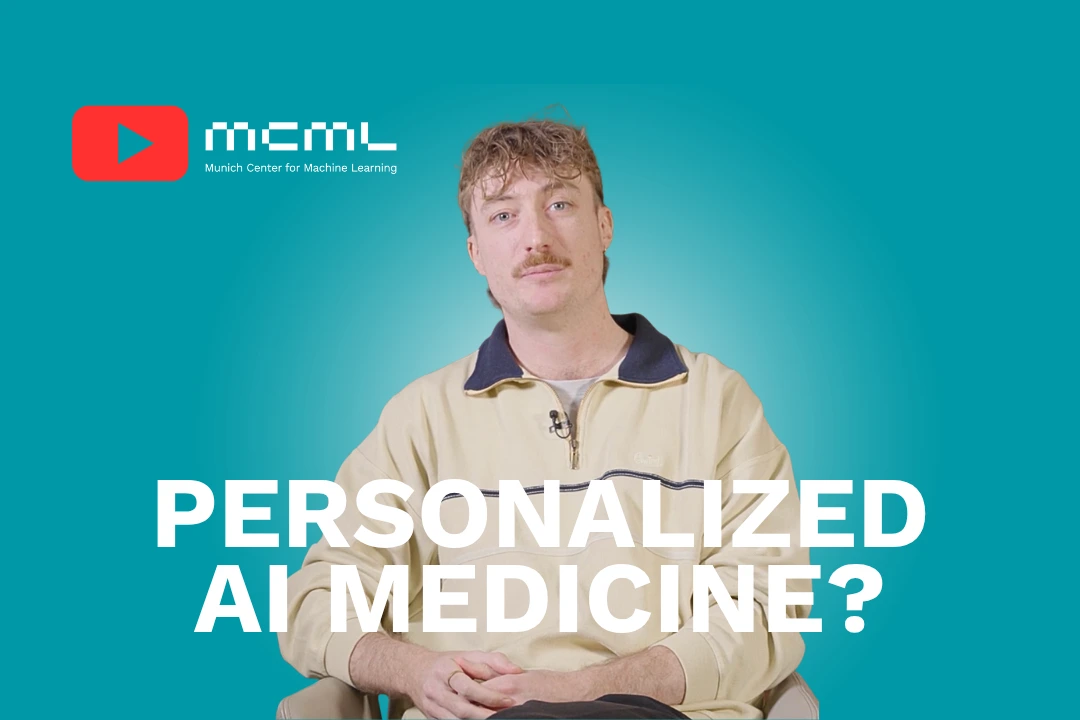
22.09.2025
Predicting Health With AI - With Researcher Simon Schallmoser
Simon Schallmoser uses AI to predict health risks, detect low blood sugar in drivers, and advance personalized, safer healthcare.

19.09.2025
MCML Researchers With 24 Papers at MICCAI 2025
28th International Conference on Medical Image Computing and Computer Assisted Intervention (MICCAI 2025). Daejeon, Republic of Korea, 23.09.2025 - 27.09.2025
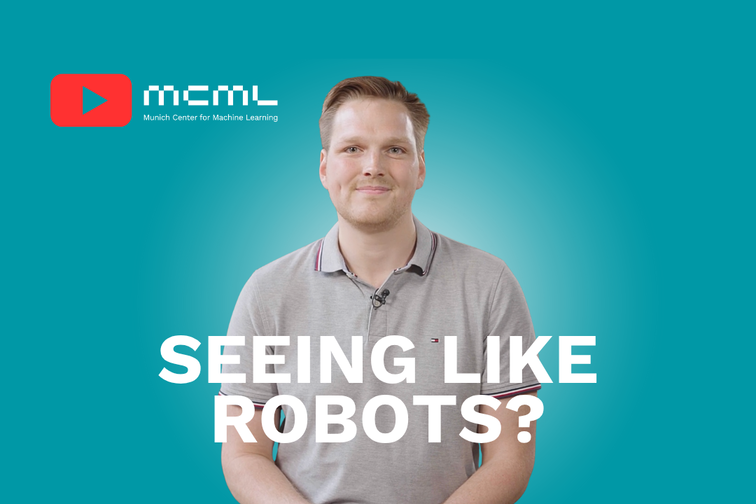
15.09.2025
Robots Seeing in the Dark - With Researcher Yannick Burkhardt
Yannick Burkhardt erforscht Event-Kameras, die Robotern ermöglichen, blitzschnell zu reagieren und auch im Dunkeln zu sehen.
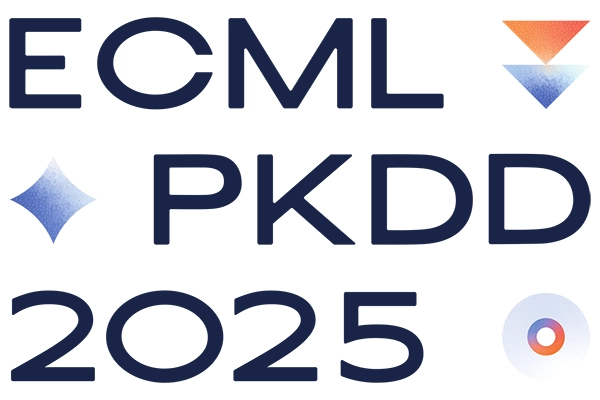
12.09.2025
MCML Researchers With Eight Papers at ECML-PKDD 2025
European Conference on Machine Learning and Principles and Practice of Knowledge Discovery in Database (ECML-PKDD 2025). Porto, Portugal, 15.09.2025 - 19.09.2025







